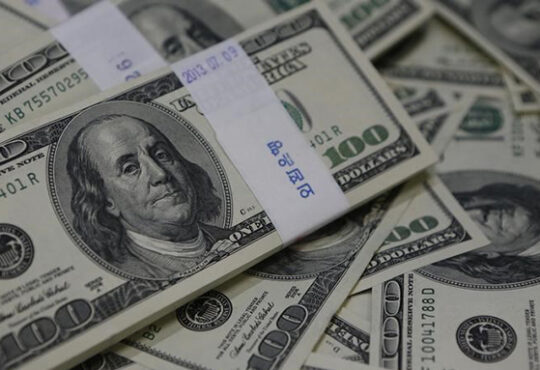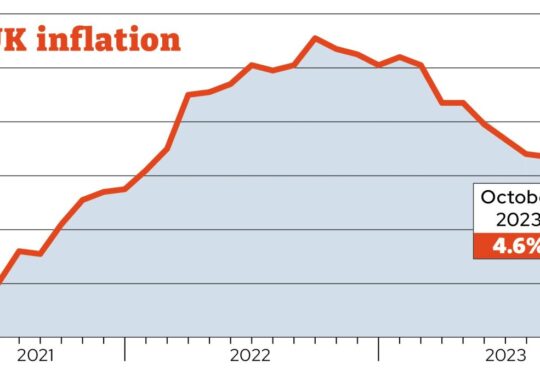
- By Natalie Sherman
- Business reporter, New York
Image source, Getty Images
The US government could start to run out of money within weeks unless it allows itself to borrow more. So how did we get to this point?
On Tuesday, US President Joe Biden met Republican House Speaker Kevin McCarthy to resume the high-stakes budget negotiations.
There are dire predictions of global financial chaos if US Congress can’t agree on a deal to raise what is known as the debt ceiling.
If the politicians fail to reach an agreement, the US could default on its debt.
So, what is the debt ceiling?
Also known as the debt limit, this is a law that limits the total amount of money the government can borrow to pay its bills.
This includes paying for federal employees, the military, Social Security and Medicare, as well as interest on the national debt and tax refunds.
Every so often US Congress votes to raise or suspend the ceiling so it can borrow more.
The cap currently stands at roughly $31.4tn (£25.2tn). That limit was breached in January, but the Treasury Department used “extraordinary measures” to provide the government with more cash while it figured out what to do.
Usually it’s a formality for Congress to raise the limit as needed but this time it can’t seem to agree on the terms.
Treasury Secretary Janet Yellen has warned that without more borrowing, the US will not have enough money to meet all of its financial obligations as soon as 1 June.
What happens if the US defaults on its debt?
This has never happened before so it is not entirely clear, but it would cause major economic damage.
The government would no longer be able to pay the salaries of federal and military employees, and Social Security cheques – payments that millions of pensioners in the US rely on – would stop. Companies and charities that count on government funds would be in peril.
If the government stops making interest payments on its debt, that would also put the country into default. The US briefly entered default in 1979, which the Treasury blamed on an accidental cheque processing issue, but an intentional default would shock the financial system where more than $500bn in US debt gets traded every day.
Moody’s Analytics predicts that in a prolonged stand-off, stock prices would fall by almost a fifth and the economy would contract more than 4%, leading to the loss of more than seven million jobs.
Over the long term, if investors start to see US debt as risky they will charge the US more to borrow money. And since government borrowing helps determine interest rates more widely, the impact would trickle out to the rest of the economy, making borrowing money for a home or a car more expensive for everyone.
There are debates about whether the government could prioritise interest payments to avoid a debt default. But honouring commitments to the owners of US debt, which include financial firms, pension funds and foreign investors, while retirees and others go unpaid is seen as a difficult one to sell politically.
What does the 14th amendment have to do with it?
Absent a deal, some people have urged the president to bypass Congress by invoking the 14th amendment of the constitution, which states that the “validity of the public debt of the United States… shall not be questioned”.
That section was passed after the US Civil War to ensure that slave-holding states in the south paid war debts incurred by the north, and that the government would not be on the hook for reparations to slave-holders and others in the south.
President Joe Biden said he was considering it, but using the clause to challenge the debt limit law would almost certainly spark a legal battle – limiting its usefulness in the current crisis.
Treasury Secretary Janet Yellen has also downplayed the possibility, saying any attempt to invoke it would spark a constitutional crisis.
What’s on the table now?
Last month, Republicans put forward a deal to suspend the debt limit by $1.5tn or until 31 March.
In exchange, they would keep spending for key agencies at 2022 levels during the next financial year- and limit growth to 1% annually over the next decade – moves that could lead to $4.8tn in savings.
The proposal would repeal key priorities of the Biden administration, such as student loan forgiveness and tax incentives for electric vehicles.
The White House has said the deal forces “middle class and working families to bear the burden of tax cuts for the wealthiest” and has “no chance” of becoming law.
How can Congress reach a deal?
Many analysts expect a short-term extension to give Congress more time to reach a deal.
In 2011, the last time the US was seen as at serious risk of a default, talks went down to the wire, before a compromise deal including $900bn in spending cuts over 10 years was announced hours before the deadline.
But even delays have consequences.
The 2011 stand-off prompted a downgrade in the US credit rating, sent the stock market plunging – and is estimated to have cost the public at least $1.3bn in higher borrowing costs that year alone.
Why is the debt limit so divisive?
The debt limit debate highlights one of the fundamental ideological differences between the two major US political parties.
The Republicans view government spending sceptically. To them, rising national debt is evidence of out-of-control government.
Image source, Getty Images
Can House Speaker Kevin McCarthy, a Republican, and President Joe Biden reach a deal?
While debt-limit brinksmanship is a relatively new strategy for the party, many Republicans believe it is necessary because the nation’s current course will ultimately lead to economic and social ruin.
Democrats, on the whole, view national government power as a force for good – a means to improve American lives and right historical wrongs.
They see raising the debt limit when necessary as housekeeping necessary to maintain the operation of the government.
The national debt, in their view, is simply a means to fund legislative programmes that have already been discussed and approved.
The debate dimmed with Donald Trump, a Republican, was in the White House and Congress raised the limit three times without major debate. It re-ignited when Joe Biden became president.






